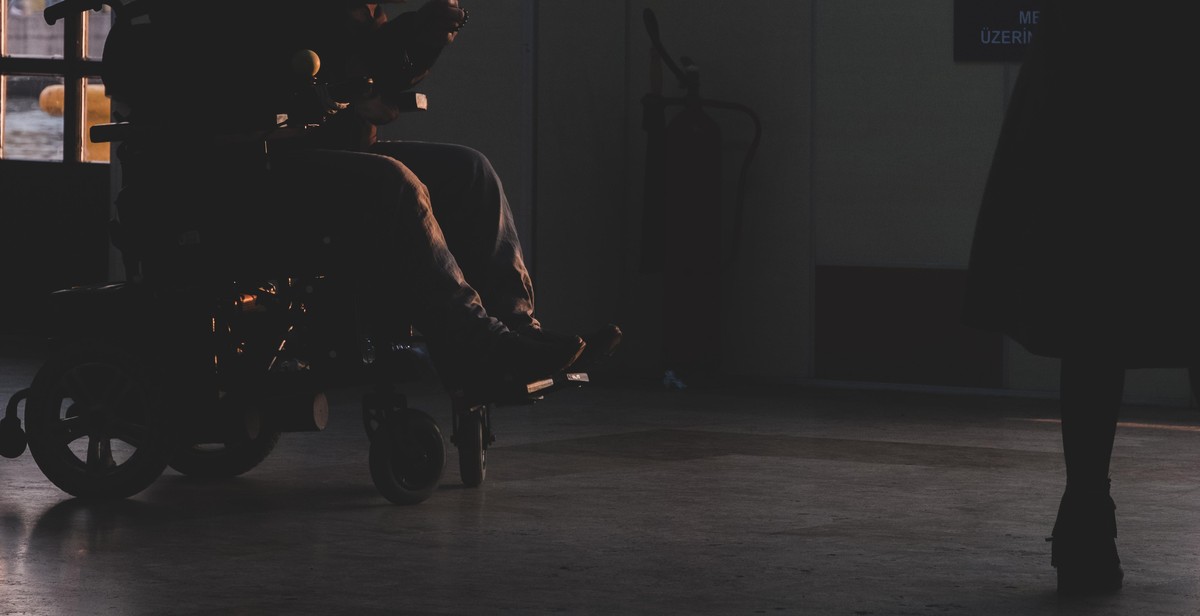How to Create a Welcoming and Comfortable Hospital Waiting Area
When it comes to healthcare, patients and their families are often anxious and stressed. One way to ease their worries is by creating a welcoming and comfortable hospital waiting area. A well-designed waiting area can help patients and families feel more at ease and comfortable during what can be a stressful time. In this article, we will discuss some tips on how to create a welcoming and comfortable hospital waiting area.
Why a Comfortable Hospital Waiting Area Matters
A comfortable hospital waiting area can have a significant impact on patients and their families. Waiting for medical procedures or test results can be a stressful experience, and a welcoming environment can help alleviate some of that stress. A comfortable waiting area can also help patients feel more at ease, which can lead to better outcomes.
Tips for Creating a Welcoming Hospital Waiting Area
- Choose comfortable seating options
- Provide access to reading materials and entertainment
- Incorporate natural light and plants
- Offer refreshments and snacks
- Ensure the waiting area is clean and well-maintained
By following these tips, you can create a welcoming and comfortable hospital waiting area that will help patients and their families feel more at ease during what can be a stressful time.

Importance of a Welcoming and Comfortable Hospital Waiting Area
A hospital waiting area is often the first point of contact for patients and their families when they visit a hospital. It is a space where patients and their loved ones wait for medical attention, test results, or updates on their conditions. Therefore, it plays a significant role in shaping the patient experience. A welcoming and comfortable hospital waiting area can help to reduce anxiety and stress and create a positive perception of the hospital.
Patient Experience
The patient experience is a crucial aspect of healthcare delivery. Patients who have a positive experience are more likely to trust their healthcare providers, comply with treatment plans, and recommend the hospital to others. A welcoming and comfortable hospital waiting area can contribute to a positive patient experience by creating a sense of calm, safety, and support. Patients who feel comfortable in the waiting area are more likely to feel positive about their overall experience with the hospital.
Reduced Anxiety and Stress
Visiting a hospital can be a stressful and anxiety-provoking experience for patients and their families. A welcoming and comfortable hospital waiting area can help to reduce anxiety and stress by providing a soothing and calming environment. The waiting area should be designed to minimize noise, provide comfortable seating, and offer distractions such as reading materials or television. Patients who are less anxious and stressed are more likely to have a positive perception of the hospital and their overall experience.
Positive Perception of the Hospital
A welcoming and comfortable hospital waiting area can contribute to a positive perception of the hospital. Patients and their families are more likely to view the hospital as caring, compassionate, and patient-centered if they feel comfortable and supported in the waiting area. A positive perception of the hospital can lead to increased patient satisfaction, loyalty, and recommendations.
| Benefits of a Welcoming and Comfortable Hospital Waiting Area |
|---|
| Improves patient experience |
| Reduces anxiety and stress |
| Creates a positive perception of the hospital |
In conclusion, a welcoming and comfortable hospital waiting area is essential for improving the patient experience, reducing anxiety and stress, and creating a positive perception of the hospital. Healthcare providers should prioritize the design and maintenance of the waiting area to ensure that patients and their families feel comfortable, safe, and supported during their hospital visits.

Designing a Welcoming and Comfortable Hospital Waiting Area
When designing a hospital waiting area, it is important to consider the comfort and needs of patients and their families. A welcoming and comfortable waiting area can help alleviate stress and anxiety, as well as improve the overall patient experience. Here are some key factors to consider when designing a hospital waiting area:
Comfortable Seating
Comfortable seating is essential for a hospital waiting area. Choose seating that is comfortable and supportive, and consider providing a variety of seating options to accommodate different preferences and needs. For example, some patients may prefer chairs with arms for easier mobility, while others may prefer a sofa or lounge chair for added comfort.
Adequate Lighting
Good lighting is important for both the comfort and safety of patients and their families. Make sure the waiting area is well-lit and consider using natural lighting where possible. Avoid harsh fluorescent lighting and instead opt for warm, inviting lighting that creates a calming atmosphere.
Entertainment and Distractions
Providing entertainment and distractions can help reduce anxiety and make the waiting experience more pleasant. Consider providing a variety of reading materials, such as magazines and books, as well as a television or music. Additionally, consider providing toys or games for children to play with.
Privacy and Quiet Spaces
Privacy and quiet spaces are important for patients and families who may need to have sensitive conversations or simply need a break from the hustle and bustle of the waiting area. Consider providing private rooms or areas that can be used for quiet reflection or private conversations.
Cleanliness and Maintenance
A clean and well-maintained waiting area is essential for the health and safety of patients and their families. Make sure the waiting area is cleaned regularly and that any spills or messes are promptly attended to. Additionally, ensure that seating and other furniture is well-maintained and in good condition.
By considering these key factors when designing a hospital waiting area, you can create a welcoming and comfortable space that enhances the overall patient experience.

Incorporating Technology in the Hospital Waiting Area
Technology has become an essential part of our lives, and it can also enhance the hospital waiting area experience for patients and their families. By incorporating technology, hospitals can provide a more welcoming and comfortable environment that can help alleviate stress and anxiety.
Free Wi-Fi
One of the most common technologies that hospitals can provide in the waiting area is free Wi-Fi. Patients and their families can use their smartphones, tablets, or laptops to stay connected with their loved ones, catch up on work, or simply browse the internet. Providing free Wi-Fi can also help patients and their families feel less isolated and more connected to the outside world.
Charging Stations
Another technology that hospitals can offer in the waiting area is charging stations. Patients and their families may spend hours in the waiting area, and their devices may run out of battery. By providing charging stations, hospitals can ensure that patients and their families can stay connected and entertained without worrying about their devices dying.
Digital Signage
Digital signage can also be a great addition to the hospital waiting area. Hospitals can use digital screens to display important information, such as wait times, upcoming appointments, and health tips. Digital signage can also be used to provide entertainment, such as videos, news, or social media feeds. By using digital signage, hospitals can create a more engaging and informative waiting area experience.
| Benefits | Explanation |
|---|---|
| Improves Patient Experience | By providing free Wi-Fi, charging stations, and digital signage, hospitals can create a more welcoming and comfortable environment that can help alleviate stress and anxiety. |
| Increases Patient Satisfaction | Patients and their families may appreciate the convenience and entertainment provided by the technology in the waiting area, which can lead to higher satisfaction with the hospital. |
| Enhances Hospital Reputation | Hospitals that provide a modern and technology-friendly waiting area may be perceived as more innovative and advanced, which can enhance their reputation and attract more patients. |

Creating a Relaxing Environment in the Hospital Waiting Area
One of the best ways to create a welcoming and comfortable hospital waiting area is by incorporating elements that promote relaxation and calmness. The following are some ideas on how to achieve this:
Nature and Greenery
Studies have shown that exposure to nature and greenery can have a positive impact on a person’s mental and physical well-being. Integrating plants, flowers, and natural lighting into the waiting area can help create a soothing and calming atmosphere. Consider adding a small indoor garden or a living wall to the waiting area. This will not only enhance the aesthetic appeal of the area but also improve air quality as plants act as natural air purifiers.
Art and Decorations
Art and decorations can also have a significant impact on the mood and emotions of people in the waiting area. Choose artwork that is calming and peaceful, such as nature scenes or abstract paintings. Incorporating comfortable seating, warm lighting, and soft textures can also go a long way in creating a relaxing ambiance.
Aromatherapy and Scents
Aromatherapy is the use of essential oils to promote relaxation and well-being. Diffusing essential oils such as lavender, chamomile, or eucalyptus in the waiting area can help reduce anxiety and promote relaxation. Be mindful of individuals with allergies or sensitivities to strong scents and ensure that the scent is not overwhelming.
By incorporating nature and greenery, art and decorations, and aromatherapy and scents, you can create a welcoming and comfortable hospital waiting area that promotes relaxation and calmness.

Staff Training and Communication
Having a welcoming and comfortable hospital waiting area is not just about the physical aspects of the space. The attitude and behavior of the staff also play a crucial role in creating a positive experience for patients and their families.
Friendly and Empathetic Attitude
Staff members should be trained to greet patients and their families with a friendly and empathetic attitude. This means acknowledging their concerns and showing genuine interest in their well-being. A smile and a warm greeting can go a long way in making patients feel welcome and comfortable.
Clear Communication
Clear communication is essential in a hospital waiting area. Staff members should be trained to communicate clearly and effectively with patients and their families. This includes providing information about wait times, procedures, and other relevant details in a way that is easy to understand.
Information Sharing
Staff members should be trained to share information with patients and their families in a timely and efficient manner. This includes providing updates on the patient’s condition and any changes in the treatment plan. It is also important to provide information about support services and resources that are available to patients and their families.
| Training and Communication | Actions |
|---|---|
| Friendly and Empathetic Attitude |
|
| Clear Communication |
|
| Information Sharing |
|
